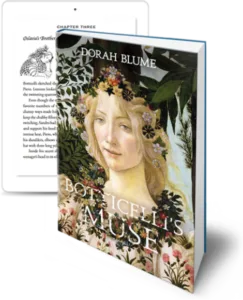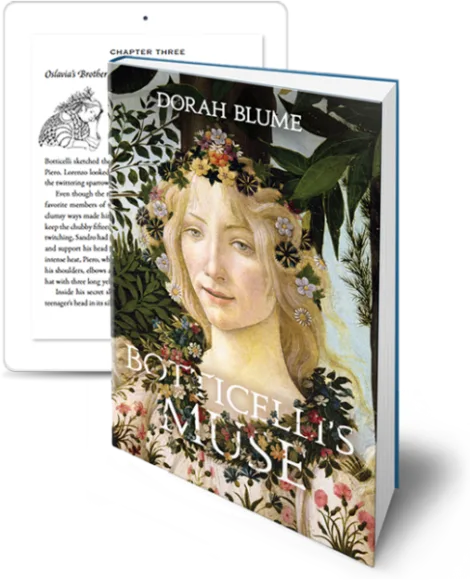 One of the many benefits of being an indie author is that you can move faster through the publishing process than if you are under contract to a traditional publishing company. But it's worth remembering that one of the reasons the big trade publishers take so long to publish a book is that built into their process are various procedures to promote a book before it becomes available commercially.
One of the many benefits of being an indie author is that you can move faster through the publishing process than if you are under contract to a traditional publishing company. But it's worth remembering that one of the reasons the big trade publishers take so long to publish a book is that built into their process are various procedures to promote a book before it becomes available commercially.
One of these procedures is to produce printed ARCS – Advance Review Copies – to be distributed to pre-publication readers with the aim of bringing in early reviews and quotable quotes for marketing purposes.
If you are willing to restrain yourself long enough between completing your book and taking it to market, you too can benefit from the ARC process, as US novelist Dorah Blume‘s case study below describes.
Sending out a not-perfect-proof as an Advance Reader Copy (ARC) in the following two scenarios enabled me to launch my novel, Botticelli's Muse, last this month with a major endorsement behind it. The following timeline demonstrates how this process worked.
- December 2016 I decided I needed confirmation that this writing project I had been working on for years was finally going to be born as a book, so on December 31, with the help of a local Espresso Book Machine at the Harvard Book Store, I printed up a bound proof of my novel, even though it was from the same file of the galley proofs that needed more tweaks and a serious proofread. (You can read about this process in this previous post on the ALLi blog.)
- February 4, 2017 ]I saw an article in artnet News about Sandro Botticelli and sent an FB messenger into cyberspace to the editor Sarah Cascone, telling her about my book.
- Early March After layout changes and limited proofreading, I generated another bound proof that still needed a final proofread. I ordered 25 bound books from a book printer (approx $8 a copy) since my local Espresso Book Machine was too expensive ($22 a copy. It’s a long book—528 pages).
- March 18 I sent two copies of the still-not-fully-proofread-bound-proof as ARCs to Publishers Weekly through BookLife, their indie author publishing forum. They requested a three-month lead time BEFORE publication.
- March 21 Sarah sent me an FB message that she wanted to know more about the book. I offered to send her a copy. On March 27, she gave me her address and I sent her one of the 25 ARCs on March 31.
- April 6 Sarah told me she had received the book and was looking forward to taking a look at it. BookLife acknowledged receipt of my book. I ordered two more sample bound copies: one from CreateSpace and one from Ingram Spark. My book has close to 90 black and white spot illustrations in it, and Ingram Spark did the best job with them.
- Early May I sent a handwritten card to Sarah to see if she had looked at the book, and asked that if she had liked it, would she consider writing a blurb.
- May 31 BookLife told me they were considering my book for a Publishers Weekly review, but that there were no guarantees it would be reviewed.
- June 2 Sarah wrote that she had read the book and that it was “impressive” and that she would like to write a blurb if it wasn’t too late. By now I had a new proof, finally proofread and ready to go to press, but I wanted that blurb to put it on the back cover.
- June 13 Sarah’s excellent blurb came in. She suggested she might also want to interview me around the release date. All this communication was on FaceBook Messenger. Here’s Sarah's blurb:
“In Dorah Blume’s capable hands, Renaissance Italy comes to life in all its complexity, historical fact deftly woven into a captivating narrative. Ostensibly the tale of the creation of Sandro Botticelli’s famed Primavera masterpiece, Botticelli’s Muse is in equal parts a story of artistic inspiration, political intrigue, religious faith, temptation, and yes, romance.” I put it on the back cover and ordered 14 copies from IngramSpark - June 23 Sarah asked for a high-resolution copy of the book cover so that Botticelli’s Muse could be added to the artnet News summer reading list. I sent out the 7 Mb file immediately through FBMessenger
- June 30 The link to the artnet News article “15 Scintillating Art Books to Read on the Beach This Summer” featuring my book came in and, of course, I was ecstatic and added it to my author website and my Facebook accounts.
- July 3 BookLife sent me a congratulatory e-mail saying that they had decided to review the book in the coming weeks and that it would be a Publishers Weekly review. In the email, however, was the warning that “IMPORTANT NOTE: Because your project has been selected for a Publishers Weekly review, it will most likely be reviewed in Publishers Weekly. However we cannot guarantee your book will actually receive a review; in some rare cases, a book or project selected for review does not actually receive a published review.”
Final Analysis

Deborah Bluestein at the Gardner Museum on a staircase that inspired a scene in her new historical novel
The review has finally appeared! Click here to view it on the Publishers Weekly website. It's been a long game.
I’ve begun what feels like a Herculean task to set up preorders on Amazon and to link to all the online resellers. Hopefully, the PW review will get written and, hopefully, it will be a favorable endorsement of my debut novel.
OVER TO YOU Do you issue ARCs in this fashion? Has the process helped you promote your self-published books from the day they go on sale? We'd love to hear your case studies.
#authors - ever issue ARCs? @walkinghead2009's case study may persuade you to in future Share on XOTHER POSTS ABOUT THAT MENTION ARCS – FROM THE ALLi ARCHIVE
https://selfpublishingadvice.org/beginners-guide-to-indie-author-jargon-book-marketing-glossary/





Thank you so much for doing a timeline. I think that really helps show the long and sometimes drawn-out process and how rewarding it can be. Thanks again!